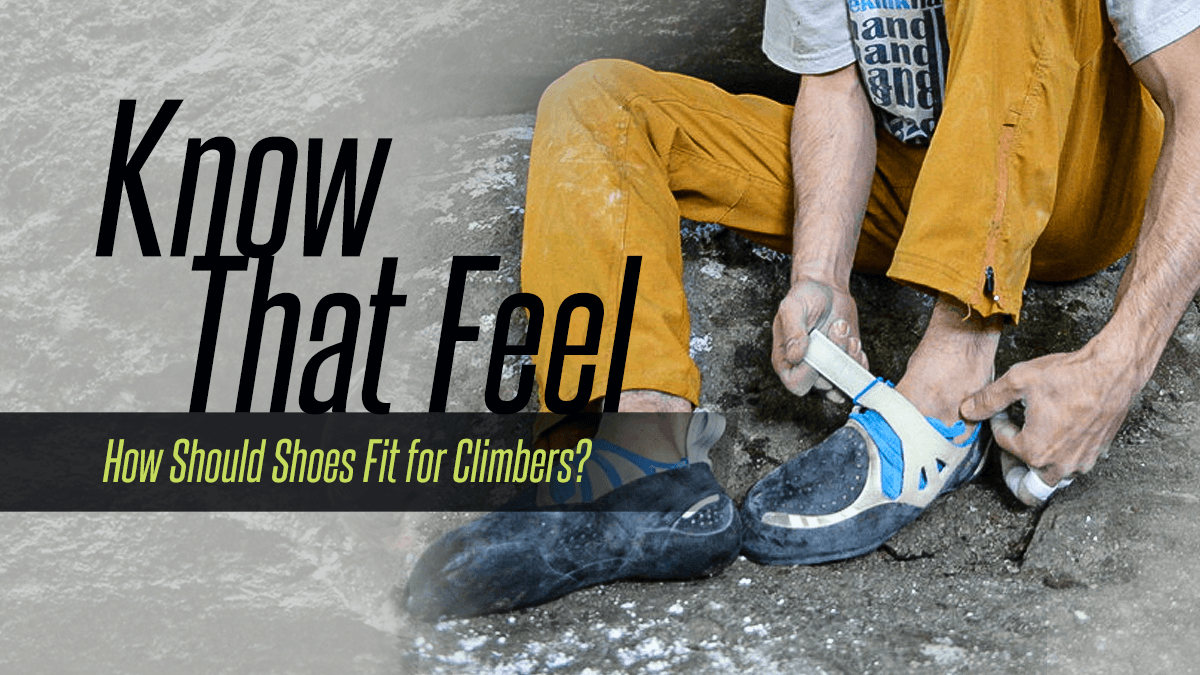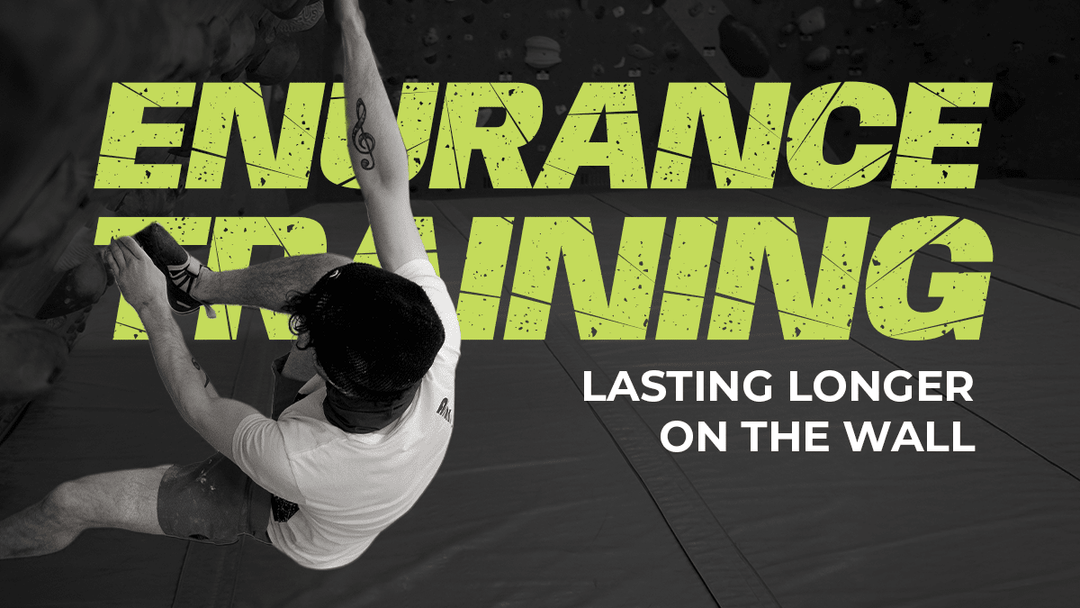Know That Feel: How Should Shoes Fit for Climbers?

Want to start climbing? You're not alone. Research shows that nearly 4.4% of all Americans climbed indoors in 2018.
Climbing is a sport that's growing fast in popularity. It's a great way to get fit, challenge yourself, and have fun. Indoor climbing gyms are popping up all over the country, making it easy for people to give this exciting activity a try. Whether you're looking for a new hobby or a way to stay active, climbing offers something for everyone. With different types of climbing, like bouldering, top roping, and lead climbing, you can always find new ways to push your limits. Plus, it's a social sport where you can meet new people who share your interests. Rock climbing is a gratifying and rewarding sport. It's both physically and mentally demanding. You'll gain a tremendous appreciation for your body and make some friends along the way!
Thankfully, the equipment for rock climbing is refreshingly simple. If you're bouldering, all you need is a rock (or a wall!), chalk, and a good pair of climbing shoes. If you're top-roping or lead climbing, you'll need more specific gear, but the fundamentals remain relatively straightforward. This simplicity should reassure you that getting started in rock climbing is not as daunting as it may seem.
Shoes can make or break your climbing experience. But how should climbing shoes fit? How tight should climbing shoes be? Let's get into it. Understanding the importance of fit in climbing shoes will equip you with the knowledge you need to make an informed decision and ensure your comfort and safety during your climbing adventures.
Aggressiveness
When selecting your climbing shoes, you'll want to choose between neutral, moderate, and aggressive shoes. For most beginners, a neutral shoe is the way to go. These shoes provide more all-day comfort and are particularly beneficial for longer, multi-pitch climbs, ensuring you can focus on the climb rather than any discomfort. Understanding the role of different types of climbing shoes in enhancing your performance will let you make the right choice for your climbing style.
Moderate shoes, conversely, are a bit more curved and designed for technical climbing. They have thinner soles than neutral shoes but are more comfortable than their aggressive counterparts. They offer a balance between comfort and precision, making them great for both indoor and outdoor routes that require more advanced footwork. Aggressive shoes are usually only recommended if you have ample experience climbing. They are the most curved and pointed, with a downturned toe that helps you grip onto tiny holds and steep rock faces. While they're excellent for challenging overhangs, they might not be as comfortable for beginners or for long periods of wear. It's essential to try on different styles and find the shoe that not only fits your foot well but also matches the type of climbing you'll be doing most often. Remember, the right fit can significantly impact your climbing performance and enjoyment.
Fit
When selecting your perfect pair, the time of day matters. For optimal results, you should shop for your shoes in the afternoon. This is because feet can swell up a full size during the day, which can affect the size you select.
It's important to remember that climbing shoes should have a snug fit. You might feel some dull friction when you break them in, but they should never feel overly painful. This variability in sizing ensures you can find the perfect fit for your climbing needs.
Shoes should have no extra space between your toes and the inside of the shoe. If there is space, the shoe will not securely fit around your toes when climbing.
When you're trying on climbing shoes, please pay close attention to how they feel on your heel. A good fit means your heel sits snugly in the shoe without slipping. If your heel lifts out when you stand on your tiptoes or make a climbing move, that's a sign the shoes are too big.
Also, consider the type of climbing you'll be doing. Bouldering and sport climbing often require more aggressive, tightly fitted shoes that curve down towards the toes. These give you better precision on small holds. On the other hand, if you're planning long multi-pitch climbs, comfort is critical, and you might want a flatter, more relaxed fit.
Remember, the material of the shoe matters too. Leather shoes tend to stretch over time, while synthetic materials usually maintain their original shape. So, think about how the fit might change after you've worn them for a while.
Lastly, always walk around in the shoes before you buy them. If possible, practice some climbing moves. This will help you get a feel for their performance and ensure you have the best fit for your climbing adventures.
Features
Each shoe has unique features, such as linings, straps, and rubber, which can influence its performance. It is often up to the climber's preference to determine which feature they like best.
Laces are versatile. You can simply loosen them when you want to loosen the fit while walking or taking off the shoe. However, straps are even more convenient, as you can just unstrap the shoe to take it off.
Shoes with Velcro straps are also popular. They're quick to put on and take off, which is excellent for bouldering or gym climbing, where you might want to slip your shoes off between climbs. But remember, the fit might not be as customizable as laces.
Besides laces and straps, there's the slipper style. Slippers have elastic instead of closures, making them super easy to pull on. They tend to fit very snugly and offer a lot of sensitivity.
Shoes are either made from leather or synthetic products. Leather shoes come unlined or lined and tend to stretch over time. This stretch can vary anywhere from a half-size to a complete full-size.
Synthetic shoes have less stretch. Most high-performance shoes are made with synthetic properties and are a preferred choice for those who wish to avoid leather products.
The rubber on a climbing shoe is also super important. It's what gives you the grip on the rock or wall. Some rubbers are soft and sticky, which is fantastic for feeling the rock and gripping small features. Others are harder and more durable, which can be better for edging, where you stand on tiny ledges.
The shape of the shoe, known as the last, can affect how it fits and performs. Some are flat for comfort on long climbs, while others are aggressively downturned, which positions your foot for more decisive moves on steep rock.
Insoles and padding can add comfort, but they might take away some sensitivity. It's all about finding the right balance for you. And don't forget about the heel! A snug heel cup will help with heel hooks, where you use your heel to grab onto holds.
When choosing climbing shoes, think about the type of climbing you'll do most. Try on different styles and sizes to find what feels best.
Final Thoughts On How Should Shoes Fit
How should shoes fit? The answer isn't always straightforward. Each climber has their preferences when choosing the best climbing shoes.
There are a few key things to remember when thinking about how shoes should fit, especially climbing shoes. First, the fit should be snug but not painful. Your toes should be close to the end of the shoe without curling, giving you the precision needed for gripping onto small holds.
Comfort is also crucial. While climbing shoes are tighter than regular shoes, they shouldn't cause discomfort that distracts you from your climb. Remember, if you're in pain, you won't perform well.
Another point to consider is the type of climbing you'll be doing. Bouldering and sport climbing may require different fits. A tighter fit might give better sensitivity for bouldering, where complex moves are expected. In contrast, for long multi-pitch climbs, you might want a more relaxed fit for comfort over hours of climbing.
The material of the shoe also plays a role. Leather can stretch up to a full size, while synthetic materials tend to hold their shape better. So, think about how the fit might change after you break them in.
Lastly, always try on climbing shoes with the socks you plan to wear (if you wear socks at all) and at the end of the day when your feet are slightly swollen. This ensures a proper fit.
In summary, the best climbing shoe fit is one that balances snugness, comfort, and suitability for your climbing style. It's worth taking the time to find the right pair, as the perfect fit can make all the difference in your climbing experience.
At Butora, we specialize in selling dynamic shoes for every kind of climbing. Shop our extensive collection today!





